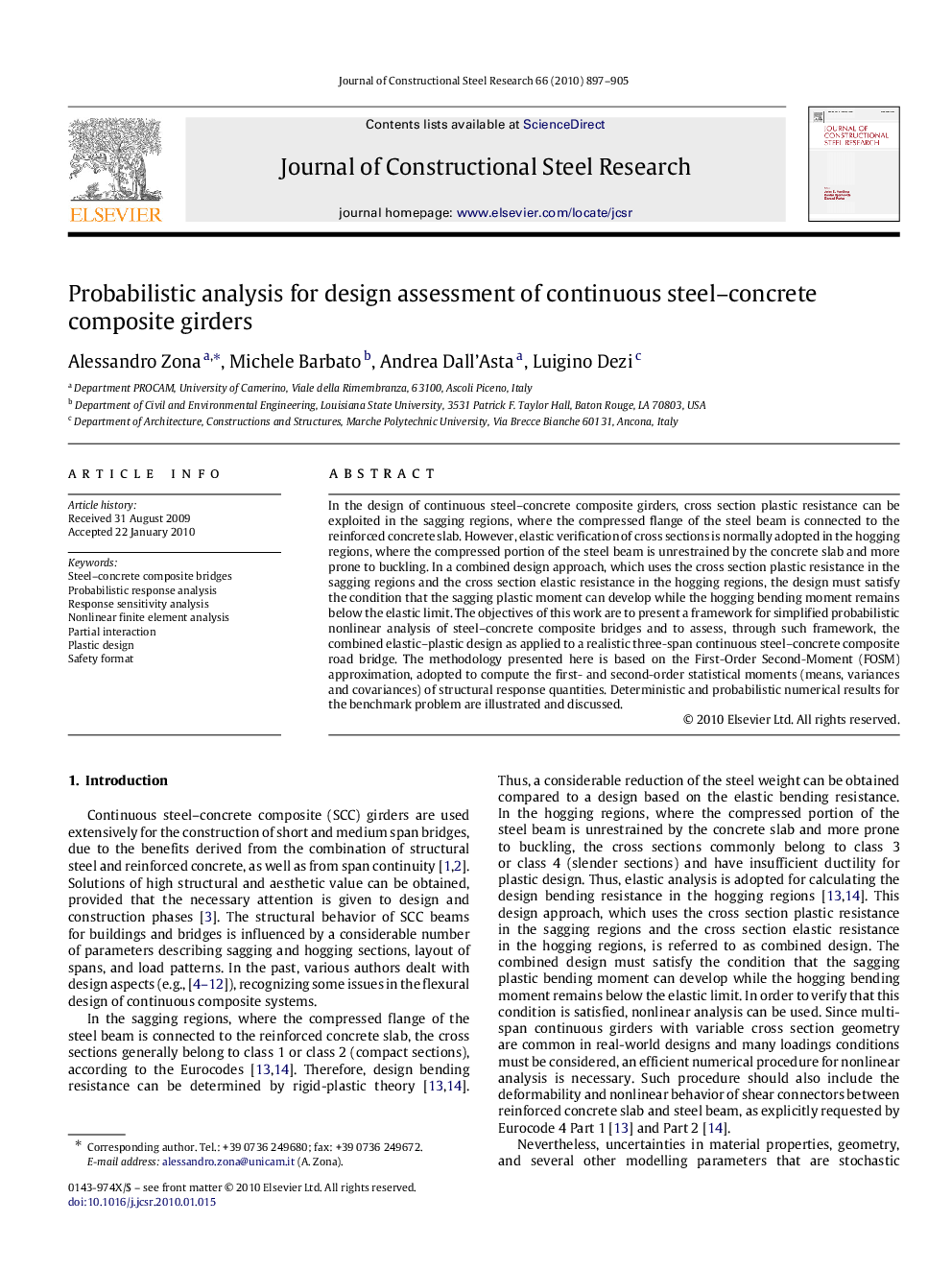| Article ID | Journal | Published Year | Pages | File Type |
|---|---|---|---|---|
| 285778 | Journal of Constructional Steel Research | 2010 | 9 Pages |
In the design of continuous steel–concrete composite girders, cross section plastic resistance can be exploited in the sagging regions, where the compressed flange of the steel beam is connected to the reinforced concrete slab. However, elastic verification of cross sections is normally adopted in the hogging regions, where the compressed portion of the steel beam is unrestrained by the concrete slab and more prone to buckling. In a combined design approach, which uses the cross section plastic resistance in the sagging regions and the cross section elastic resistance in the hogging regions, the design must satisfy the condition that the sagging plastic moment can develop while the hogging bending moment remains below the elastic limit. The objectives of this work are to present a framework for simplified probabilistic nonlinear analysis of steel–concrete composite bridges and to assess, through such framework, the combined elastic–plastic design as applied to a realistic three-span continuous steel–concrete composite road bridge. The methodology presented here is based on the First-Order Second-Moment (FOSM) approximation, adopted to compute the first- and second-order statistical moments (means, variances and covariances) of structural response quantities. Deterministic and probabilistic numerical results for the benchmark problem are illustrated and discussed.
